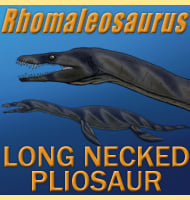Simolestes
In Depth Despite its long history and broad geographic range, Simolestes surprisingly remains a little known pliosaur, certainly no way near as famous as the often over exaggerated Liopleurodon. Simolestes does not have the best fossil representation, but comparison to other pliosaurs has yielded estimates of up to six meters long for the living animal. … Read more

